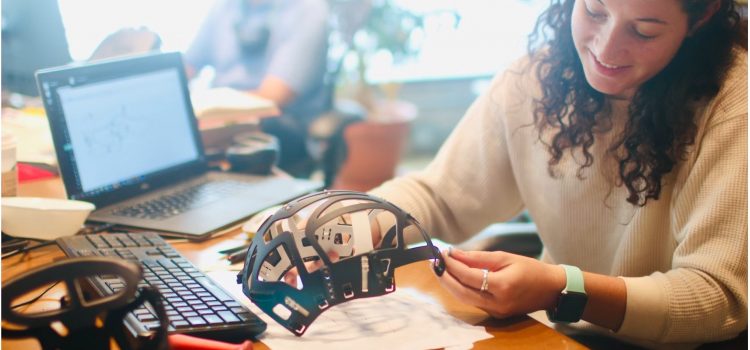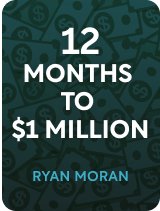

This article is an excerpt from the Shortform book guide to "12 Months to $1 Million" by Ryan Daniel Moran. Shortform has the world's best summaries and analyses of books you should be reading.
Like this article? Sign up for a free trial here.
Where can you find suppliers to manufacture your product? Why is ordering samples from Alibaba better than making a prototype?
Once you have a good idea of what you want to sell for your new business, you need to actually create it. According to 12 Months to $1 Million by Ryan Moran, the most efficient way to test out your product is to have a manufacturer send you several ready-made samples rather than a prototype.
Keep reading to learn why ordering samples moves your company forward in the product development process.
Where to Get Ready-Made Samples
Once you have an idea that solves a problem for your target audience, the next step is turning an idea into a product. Start by finding a supplier who can manufacture your product. To figure out which supplier will best serve your needs, Moran suggests you start ordering samples from Alibaba.com or similar sites by contacting several suppliers. You should try to get ready-made samples from them of products similar to the one you’d like to offer. Then, modify those samples until you have the product you want.
(Shortform note: Moran doesn’t go into detail about how to select, communicate with, and order samples from suppliers, but other experts provide some tips you can consider. When choosing suppliers from Alibaba, make sure they’re gold suppliers (which means they pay for a premium membership), verified (which means their facility has been inspected by an independent third-party), and that they have trade assurance (which protects you if there are shipping or quality disputes). Once you’ve selected potential suppliers, compare quotes and consider factors such as lead time (the time it takes to produce and ship your product), shipping costs, and defect policies to determine which is the best.)
According to Moran, refining ready-made samples is more efficient than asking suppliers to make a custom prototype based on your design. Ordering a custom prototype is far more time-consuming, and you’ll likely have to change your product design several times anyway.
(Shortform note: In The Lean Startup, Eric Ries suggests a perhaps even more cost- and time-efficient approach for creating prototypes for your product: Designing a minimum viable product (MVP). According to Ries, an MVP is the most basic and bare-bones version of your product—it doesn’t even need to be functional. This could be as simple as a landing page that describes your product or a demo video that simulates how it functions. Creating an MVP allows you to get feedback about your product’s concept and design without you needing to build it yet.)
To modify ready-made samples into the product you want to sell, you need to test them out and get feedback from your target audience. Once you do, you can ask your supplier to make the necessary changes. Moran suggests you keep refining your product as you go and don’t let perfectionism stop you from moving forward.
(Shortform note: In 101 Design Methods, Vijay Kumar recommends you get feedback about your prototypes by watching how people interact with them. He suggests you try to simulate the scenarios in which people would normally use your product. This can help you understand how users experience your product and provides you with more insights for how you can improve it than if you simply asked them for feedback on it.)
Once you have a product that’s ready to sell, order a small amount of inventory—for instance, 100 units to start. This allows you to start selling without risking too much money if there’s an issue or your product doesn’t sell well.
(Shortform note: Some experts recommend you start with a slightly larger inventory of at least 300 to 500 units before you start selling. They explain that if your product is popular and sells well, you may run out of stock faster than you think. For example, if you sell five units per day in the first week and ten units per day in the second week, you’ll already exceed 100 units. Meanwhile, it could take months for your product to be manufactured and shipped. Therefore, it may be helpful to have a larger inventory than Moran suggests.)
At this stage, Moran writes that it’s more important to stick with a supplier who can deliver your product on time and communicate with you effectively than to try to save money by switching around with different suppliers. The key to making a profit is to be able to stock your inventory when needed, which depends on having a reliable supplier.
(Shortform note: According to some experts, larger suppliers tend to be more reliable because they have backup systems that can help them handle unexpected situations and deliver your order even if something goes wrong. However, smaller suppliers might give you more attention and better service. If you decide to work with smaller suppliers, you can reduce the risk of running out of stock by splitting your orders between two different suppliers so you can switch to the other one if the first runs into problems.)

———End of Preview———
Like what you just read? Read the rest of the world's best book summary and analysis of Ryan Daniel Moran's "12 Months to $1 Million" at Shortform.
Here's what you'll find in our full 12 Months to $1 Million summary:
- Why it's not only possible, but simple, to build a $1 million business in a year
- Proven techniques for creating breakthrough products
- How to decide whether to scale or sell your business






